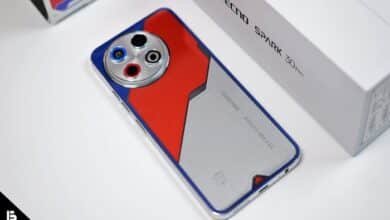In fact, one of the leading factors in the success of a stainless steel weld is choosing reliable welding rods or wires. Stainless steel welding is an art that needs precision and expertise, However; it also requires the right materials. Compatible welding rods or wires can make a monumental difference in the weld quality/strength/appearance based on different types of characteristics. In this article, we will discuss how stainless steel welding is impacted by tube/rods, and how professionals and hobbyists alike can make informed choices.
Note: Discover the best stainless steel welding wire with us! As an authorized dealer of all major brands used by professionals, we offer the largest stock of welding supplies. Visit our website at https://www.udo.co.th/product/detail/yawata-316l-16 to explore our products or seek expert welding advice from our specialists. Don’t miss out on the highest quality and availability in the market!
Learn About Welding Stainless Steel
Overall, the advantages of stainless steel lead to its extensive utilization in various industries (construction, automotive, food processing etc., and due to corrosion resistance a major problem is solved. Special techniques and equipment are required to weld stainless steel without losing its properties, strength, appearance or cleanliness.- The welding rod/wire is instrumental in solving these challenges due to its influence on penetration, strength, and heat resistance.
Long Tail Keyword: Welding in Stainless Steel
Effect of Stainless Steel Welding Rod or Wire Types on Unions
Strength and Durability
Welding rods or wires are made for different grades of stainless steel specifically. When welding austenitic stainless steel, for example, rods such as Yawata 316L-16 are suitable. Such rod provides a very good mechanical property and corrosion resistance which is very essential in chemically or wet area environments. However, using the incorrect rod can weaken the weld strength which could result in potential failures as time passes.
Heat Management
Stainless steel is heat-sensitive, and excess or improper heat during welding can lead to bending or discoloration of the metal. For instance, welding rods that are rich in silicone are low heat input and would keep a stable arc running whilst at the same time minimizing overheating. The use of these rods controls the weld pool, allowing for a smooth finish without damaging the base material.
Aesthetic Finish
The appearance of stainless steel welds is often every bit as critical as their strength. Stable arc welding rods and consistent deposition rate make for a cleaner weld with little spatter like you can find in the Yawata 316L-16. This is especially crucial for applications where the weld will be seen — like architectural work and decorative stainless steel.
Corrosion Resistance
Rust and corrosion resistance is one of the most enviable properties of stainless steel. But, if a non-matching welding rod is used, this characteristic can be lost. Welding rods for stainless keep the metal oxidation free and prevent these welds from failing in harsh conditions. For example, a rod such as Yawata 316L-16 provides excellent corrosion resistance at saline or industrial conditions.
Ease of Use and Versatility
Certain welding rods are easier to use and more versatile than others. Easy striking rods that retain a steady, arcing line appeal and serve all skill levels, beginner and pro alike. This minimizes the possibility of defects like porosity or cracking, which will compromise both the quality and durability of the weld. Additionally, versatile rods permit welders to use them for varying grades of stainless steel without much change in the base material.
How to Pick The Correct Welding Rod or Wire for Stainless Steel Welding
Factors to consider when choosing a welding rod or wire for stainless steel:
Material Compatible: Match the rod to be welded with grade of stainless steel
Consider the environment in which the weld will be operating exposed to moisture, chemicals or high temperatures?
Welding Process: Use rods which generate no, or very little spatter for visible welds.
As an example, Yawata 316L-16 is a go to stainless steel filler for many applications. Due to its low carbon content, carbide precipitation is not a concern yielding long-term corrosion resistance and high strength of the weld.
Top Tips for Better Stainless Steel Welds
Cleanliness is Key
Clean the base material and rod before welding. So, dirt or grease will weaken the weld and create defects.
Use the Right Heat Input
You don’t want to have too much heat to be damaging the stainless steel. Choose a rod that allows you to control the input of heat and causes less warping or discoloration.
Maintain Proper Technique
Uniform weld bead results from the same speed and angle for welding. Scrap material can help ensure you achieve the best results right from the start.
Post-Weld Cleaning
Make sure to passivate after welding — you can either use a stainless steel brush or do a chemical passivation with something like citric acid (more about that in one of our training courses) to bring the material back to its original condition and improve how the weld looks.
Conclusion
The type of welding rod or wire used will have a major impact on the quality and finish of any stainless steel weld. The difference is with the right materials — everything from ensuring corrosion resistance to a high-end appearance. Your success starts with the types of welding rod or wire used in your project and learning to use them effectively.
To take your stainless steel welding projects to the next level, browse through our selection of high-quality welding rods such as the Yawata 316L-16 for superior results. You should buy the correct instruments today and you’ll detect the distinction in each weld.





